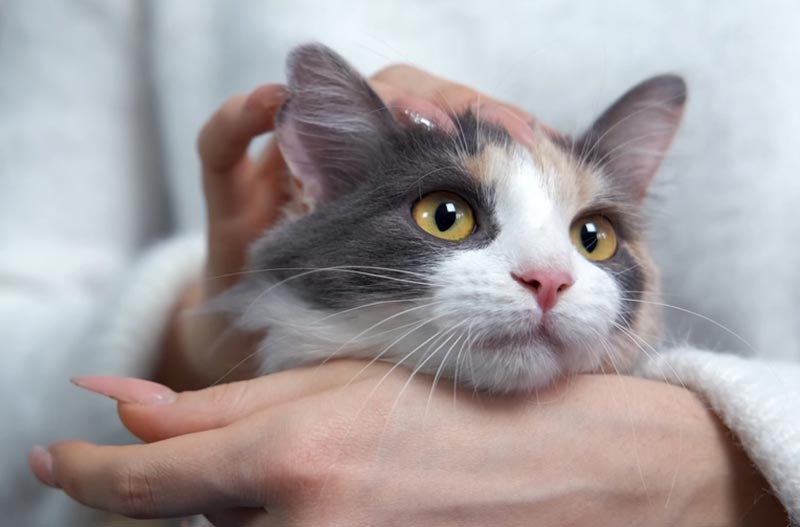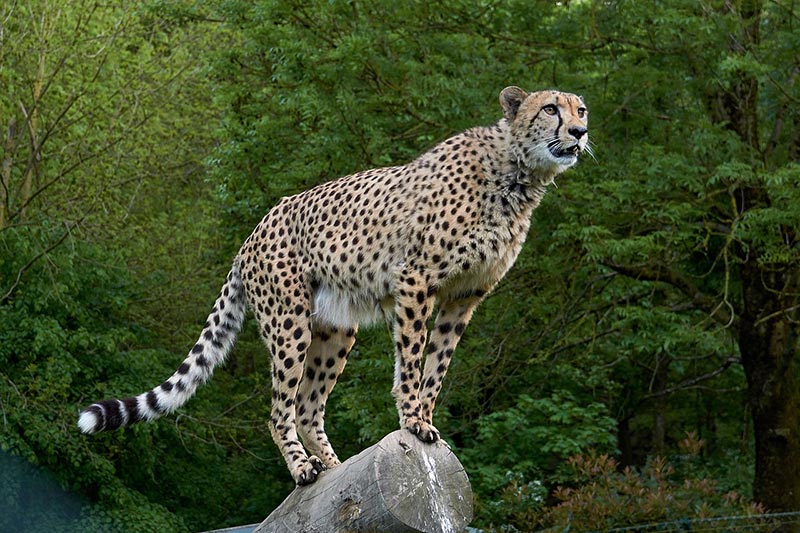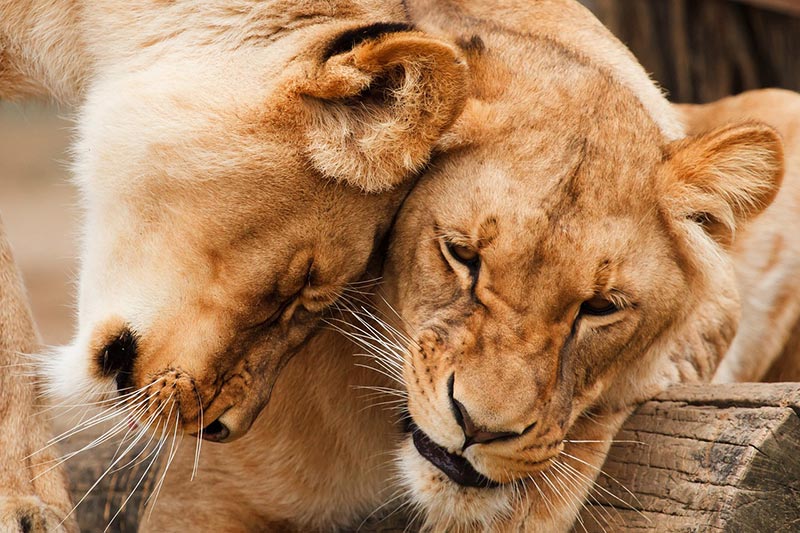Most cats have no problems with being vocal. They may be greeting you at the door, asking for extra head scratches, reminding you they can see the bottom of their food bowl, or chirping as they chase a pesky fly around your apartment. The way cats communicate is unique to them; it differs from human methods of communication and is incredibly effective and significant to cats.
Vocalizing helps cats bond socially, show off, and even defend themselves when needed. However, housecats have more in common with their bigger, wild ancestors than you may initially realize.
Any cat owner can tell you they love the sound of a cat’s purr, but you may be wondering just how similar your cat is to a lion or jaguar. Do big cats purr too? Or can your house cat roar? The answer isn’t a simple yes or no. For the most part, big cats like lions, tigers, and leopards can roar but can’t purr. However, smaller wild cats like cougars, bobcats, and house cats can purr but cannot roar. While this may seem like a hard no, some big cats, like Cheetahs, can purr. But why? Let’s find out.

What Is Purring?
Purring is possible in cats because of the tightly connected, delicate bones that line the back of a cat’s tongue up to the base of its skull. When a cat vibrates its larynx or voice box, it causes these thin bones to resonate. These bones in the cat’s throat are called the hyoid, and they support the larynx and the tongue.
The hyoid is a U-shaped bone directly above the thyroid cartilage, or what we consider the Adam’s Apple area in humans. The hyoid bone is ossified in smaller cats like our domesticated housecats. A domestic house cat’s hyoid bone has rigid, bony tissue. When a bobcat, cheetah, or cougar makes its larynx vibrate, it causes the hyoid bone to resonate or to produce a deep, full, and reverberating sound. This low-frequency rumble is the addictive noise we affectionately call purring.
In big cats, however, this hyoid bone is only partially ossified: completely changing which noises and vocalizations that larger species of cats can make. Lions, tigers, and jaguars have a flexible hyoid bone that is only partially attached. This allows them to produce deep and terrifying roars but prevents them from making purring noises like their smaller counterparts.
Why Do Cats Purr?
While it might be discouraging to discover lions and tigers can’t purr, you may be wondering why cats purr in the first place. No one knows when or why smaller cat species developed the ability to purr. If you listen to your cat while they purr (and let’s be honest, who doesn’t lay their head on their cat when their cat is purring), you can hear that the purring noise is one continuous sound they make that is unaffected by their breathing patterns.
Most often, you will find that cats purr while they are content and enjoying cuddles and scratches. Some cats purr while eating, and others purr while being brushed. There are multiple situations where you may hear your cat vocalizing by purring.
- Attention Seeking: Cats purr to request your attention. If your cat is brushing up against you and asking for scratches and pets, you may hear them purring even before you start to acquiesce to their request. However, attention-seeking might not always be for cuddles, and it can sound different depending on the situation. For example, if your cat is hungry, its purr might sound different and be combined with meowing as it expresses discontent.
- Happy: If your cat is happy, it may start purring. Happiness comes in many forms. Your cat may purr if they are laying in their favorite sun-flooded spot for a nap or getting chin scratches that are just right. Cats’ happy purring is their version of a satisfied sigh, which is the most common cause behind purring.
- Mothering: If you have ever had a mother cat and her litter, you know that purring is extremely common. In fact, purring is one of the first vocalizations a kitten can make. With a mother and her liter, purring often is a way for the kittens to tell their mother that they are okay and content. As for the mother, she may purr as a way of bonding with her litter or comforting them to sleep.
- Self-Soothing: Contrary to popular belief, not all purring is to show happiness. Sometimes, a cat may purr to reduce its anxiety and discomfort. Much like how your cat can sense your anxiety or discomfort and purrs to soothe you, they will often purr to soothe themselves. If you notice your cat purring after surgery or injury or a particularly stressful event, it may be self-soothing to promote healing or lessen anxiety.

Big Cat Vocalizations
While the fact that large cats like lions and tigers cannot purr may be slightly disappointing, the other vocalizations they are capable of are equally fascinating. Larger cat’s hyoid bone prevents them from purring, but it allows their larynx enough flexibility to create that terrifying full-throated roar we love to hear.
Lions
The tough cartilage of the hyoid bone allows a lion’s roar to be easily heard and felt almost 5 miles away. A lion’s roar can even reach a human’s pain threshold if they are standing too close. While lions cannot purr, they have something equivalent—a chuff or moan. Some lions may release a low chuff to express their contentedness when communicating with other lions. Lions can also make a soft groan sound that they typically release when bonding with another lion.
Tigers
Unlike lions, tigers are likelier to release a roar that sounds more like a massively impressive growl. Tigers’ growls and roars can carry up to 2 miles from their location. Like regular cats’ purring, a tiger’s growl can mean multiple things. Sometimes a loud growl can warn other tigers encroaching into an individual’s territory, call out for their family, or invite mates.
Cheetahs
It is impossible not to mention cheetahs when discussing purring and big cat vocalizations. Cheetahs are incredibly unique, and not just for their speed. They are technically in a cat category all their own because they are one of the only large cats capable of purring. Instead of roaring, cheetahs release a high-pitched chirp sound.
Cheetahs chirp to communicate, display distress, locate each other, or if they want to attract a mate. However, cheetahs can also purr. Cheetahs produce a wide variety of sounds, including growling, an explosive yelp (different from their chirp), and the coveted purring sound. Like regular housecats, a cheetah’s purr typically is a way of displaying their happiness.


Conclusion
Purring is often one of the first things we think about when talking about domesticated housecats. A cat’s purr is equally as soothing to us as it is to them. The highly coveted purring sound is possible thanks to a cat’s unique hyoid bone in its throat.
While not all wild cats can purr, they all have unique methods of communicating and showing their happiness. Next time you get the chance to visit a zoo, pay special attention to the sounds the large cats make when communicating with each other. They might just surprise you!
Featured Image Credit: PublicDomainPictures, Pixabay
